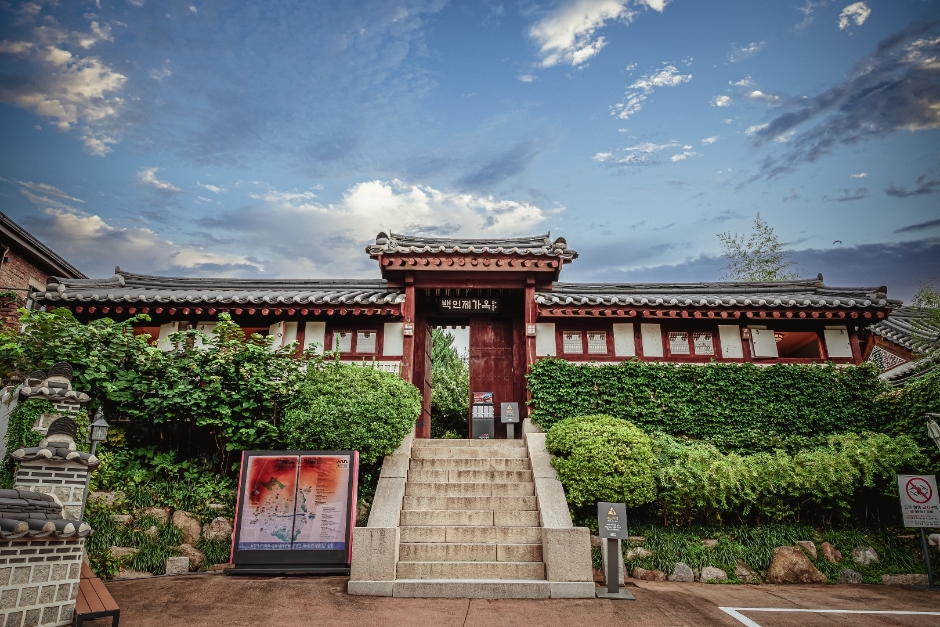Stylenanda Flagship Store - Myeong-dong Branch [Tax Refund Shop] (스타일난다플래그쉽스토어 명동)
1.0Km 2024-06-27
37-8, Myeongdong 8-gil, Jung-gu, Seoul
-
On The Spot - Myeong-dong Branch [Tax Refund Shop] (온더스팟 명동점)
1.0Km 2024-04-18
37-4, Myeongdong 8-gil, Jung-gu, Seoul
-
Bunni Studios Optical - Myeongdong Branch (바니스튜디오 안경(명동역점))
1.0Km 2024-04-02
21 Myeongdong 8ga-gil, Jung-gu, Seoul
Bunni Studios is an optical store geared toward the younger generation, offering quality glasses and color contact lenses. The staff are able to provide service in a range of foreign languages, including English, Japanese, and Chinese. Bunni Studios collaborates with popular lens producers, and offers over 500 types of lenses. Shoppers can also have products delivered to their hotel within Seoul if they shop does not have the item in stock. International tourists can make tax-free purchases.
The Saem - Myeong-dong Branch (No. 1) [Tax Refund Shop] (더샘 명동1호점)
1.0Km 2024-04-16
41, Myeongdong 8-gil, Jung-gu, Seoul
-
Nakseonjae Hall (낙선재)
1.0Km 2021-09-30
99, Yulgok-ro, Jongno-gu, Seoul
+82-2-2148-1822
Located inside Changdeokgung Palace, Nakseonjae Hall is a one-story structure built in ikgong style (bird wing-shaped eaves placed on top of the pillars) with a hip tiled and gable roof. It has 6 kan in the front and 2 kan (traditional unit of measurement of the space between pillars) to the sides. It originally belonged to the nearby Changgyeonggung Palace, but came to be considered a part of Changdeokgung Palace in more recent years.
The hall was constructed in 1846 (12th year of King Heonjong’s reign) and it is collectively called Nakseonjae together with the adjacent Seokbokheon Hall and Sugangjae Hall.
Behind the building is a flower garden made of stacked large stones. The chimney, the flowers, and the oddly shaped stones harmoniously blend into one another to create an outstanding landscape gardening.
Baek In-je House (백인제가옥)
1.0Km 2025-10-24
16 Bukchon-ro 7-gil, Jongno-gu, Seoul
+82-2-724-0200
Baek In-je House, located in Bukchon Hanok Village, is a hanok built during the Japanese administration period that portrays modern hanok features. The structure consists of a main room offering a good view of the whole village, spacious bedrooms, a large garden, and annex buildings. As it maintains the beauty of a traditional hanok while incorporating the modern trend of its time, Baek In-je House is considered to be highly valuable in means of both architecture and history, representing the Bukchon Hanok Village together with Yun Bo-seon House.
Baek In-je House was built from black pine, which was first introduced in Seoul during the Gyeongseong Expo in 1907, distinguishing itself from other upper-class houses of its time. Unlike other traditional hanok designs that separate the main building from the other rooms, Baek In-je House connects the two with a hallway, allowing convenient access between the two structures. The house also consists of a Japanese-style hallway and floor mat rooms, reflecting the interior trends of that period. Baek In-je House is also unique in that the main room is partially built as a two-story structure, a style that was never seen in any traditional hanok built during the Joseon period.
Åland - Myeong-dong Main Branch [Tax Refund Shop] (에어랜드 명동본점)
1.0Km 2024-06-27
40, Myeongdong 8-gil, Jung-gu, Seoul
-
Innisfree - Myeong-dong Station Branch [Tax Refund Shop] (이니스프리 명동역)
1.0Km 2024-04-18
2F, 43, Myeongdong 8-gil, Jung-gu, Seoul
-
Rawrow - Kwangjang Market Branch [Tax Refund Shop] (로우로우 광장시장)
1.1Km 2024-04-19
Store #239, Gwangjang Market, 88, Changgyeonggung-ro, Jongno-gu, Seoul
-
![Stylenanda Flagship Store - Myeong-dong Branch [Tax Refund Shop] (스타일난다플래그쉽스토어 명동)](http://tong.visitkorea.or.kr/cms/resource/53/3314453_image2_1.jpg)
![On The Spot - Myeong-dong Branch [Tax Refund Shop] (온더스팟 명동점)](http://tong.visitkorea.or.kr/cms/resource/42/2878642_image2_1.jpg)




![Åland - Myeong-dong Main Branch [Tax Refund Shop] (에어랜드 명동본점)](http://tong.visitkorea.or.kr/cms/resource/81/3314381_image2_1.jpg)
![Innisfree - Myeong-dong Station Branch [Tax Refund Shop] (이니스프리 명동역)](http://tong.visitkorea.or.kr/cms/resource/29/2878629_image2_1.jpg)
![Rawrow - Kwangjang Market Branch [Tax Refund Shop] (로우로우 광장시장)](http://tong.visitkorea.or.kr/cms/resource/29/2878229_image2_1.jpg)
 English
English
 한국어
한국어 日本語
日本語 中文(简体)
中文(简体) Deutsch
Deutsch Français
Français Español
Español Русский
Русский